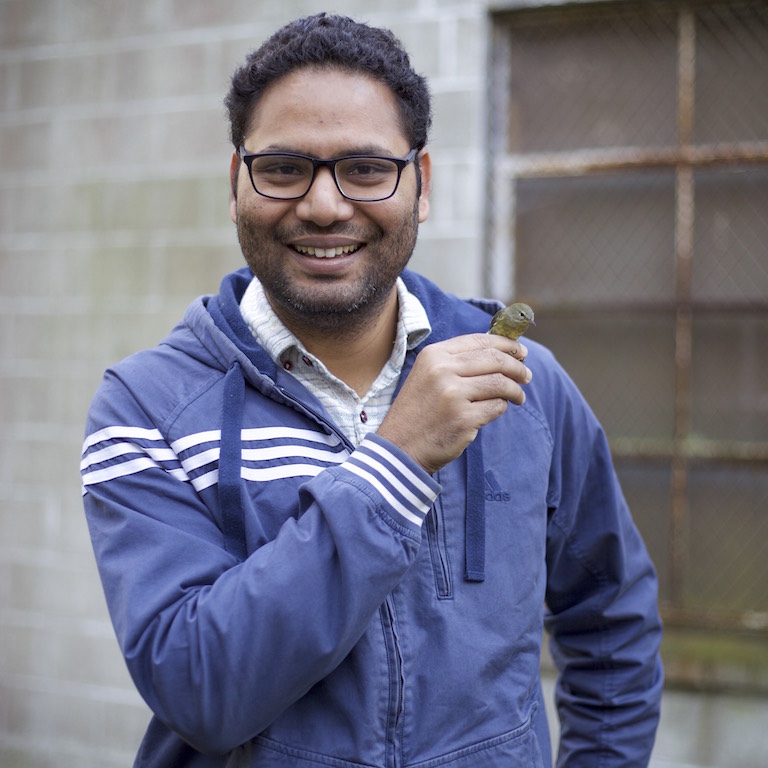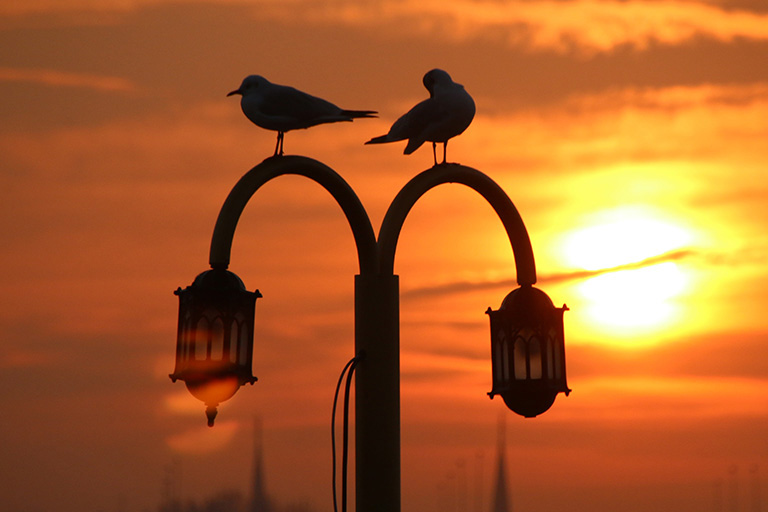The expansion of human-occupied environments has led to cities that seemingly never sleep thanks to artificial light at night. While artificial light makes it easier for people to be active at night, it also disrupts the daily light cycles and biological rhythms of living things.
A new study by Indiana University researchers found that birds exposed to artificial light at night begin and end their reproductive cycle earlier in the season. Since bird reproductive cycles have evolved to coincide with the availability of food sources for their offspring, the mismatch in timing could negatively affect the survival rates of hatchlings and bird biodiversity.
“We know that birds have two major timing mechanisms—those based around daily changes and those based around seasonal changes,” said Devraj Singh, an IU postdoctoral researcher and the lead author of the study. “For species whose timing is affected by daily cycles, artificial light makes it seem like the days are longer than they are. This can disrupt the birds’ natural mechanisms for knowing when it’s time to reproduce.”
The study, funded by IU’s Environmental Resilience Institute, focused on two subspecies of dark-eyed juncos—one migratory and one non-migratory—in Virginia. Researchers captured the birds when they were not in their reproductive phase and transported them to the Kent Farm Research Station in Bloomington, Ind.
At the research station, the team simulated different light regimes from January through September, with some birds experiencing total darkness at night with others experiencing dim artificial light during times that would typically be dark.
During the study period, the researchers measured the male bird’s reproductive organs, which enlarge during the breeding season, to determine when the birds were starting and ending their breeding cycle. On average, birds subjected to artificial light at night started their reproductive cycle approximately two weeks earlier than birds subjected to darkness.
Among the two subspecies of juncos, the migratory birds traditionally enter their reproductive cycle later than the non-migratory birds. During the study, researchers found this pattern held true, indicating a genetic trigger underlying birds’ annual reproductive cycles.
An early start to the mating season induced by artificial light, however, could place the birds out-of-step with their environment, threatening their breeding success.
“These birds have adapted over time to reproduce when food is most abundant for the offspring,” said Singh. “If they start reproducing before those food sources are available, there may not yet be enough food for the hatchlings. This could result in reduced reproductive success and declines in bird numbers.”
To further understand the effects of artificial light at night on birds and how to reduce negative impacts, the researchers are planning a follow-up study to see whether some types of light are more disruptive than others. For example, past studies have found that changes to the quality of nighttime lighting can reduce the impact on wildlife. The team will also be attaching chips to the birds that will measure birds’ nighttime activity levels and migratory activity to see if migration is also affected by artificial light at night.
“To fully understand the impact of artificial light at night, we need to see the different ways it affects the birds,” said Singh. “By looking at how artificial light at night is affecting birds’ activity levels at night, migration timings, and hormone levels, we can get a better sense of the underlying mechanisms to help us best protect against the impacts.”
About the Environmental Resilience Institute
Indiana University’s Environmental Resilience Institute brings together a broad, bipartisan coalition of government, business, nonprofit and community leaders to help Indiana better prepare for the challenges that environmental changes bring to our economy, health, and livelihood. Launched in May 2017, ERI is working to deliver tailored and actionable solutions to communities across the state of Indiana.




